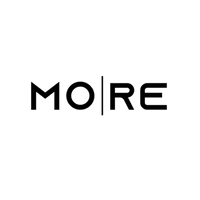
Are you beginning your Movement Revolution?
If you do, you are not alone. If you do, we are here to help!
Strength to us is never measured by weight hoisted or shifted, nor by the amount of calories burnt. We measure strength by your ability to be you and champion your desire to make positive changes to your lifestyle.
What we aim to do here is write a series of blog posts covering basic, but very important, elements of a healthy and active lifestyle!
We will cover stretching suggestions, warm up suggestions and some suggestions on how to ease your way into exercising. A lot of these exercises will take place inside a gym but a lot of them can be done at home, and these exercises will help whether your movement happens in a gym or outside a gym!
Today we will cover what we call ¨THE BIG 3¨

What are the Big 3? Why do we call them that? Why start there? What is the distance to the sun? We will answer these questions here for you :)
The Big 3, for us, are the 3 pillars of stability and strength which will serve anybody well, from a world class athlete to someone who wants to be pain free from the rigours of a desk job.
These 3 focal points are the Thoracic spine (T-Spine), Core and Gluteal muscles.
The T-Spine is itself seen as a support structure, while the lower back (where most people develop pain) has a function of stability, not support.
When the T-Spine is underworked, the lower back (Lumbar Spine) shifts its function from a stabilisation one to a support one; and that is where pain and problems related arise. By training this area you can start easing the load on the Lumbar spine, and thus allowing other activities to be done with a significant reduction of risk!
Core is definitely NOT ABS!!! Doing crunches, for example, may even cause more harm than good. To keep it very simple, the core is essentially ¨a belt¨ encompassing the areas highlighted on the diagram next to this text. We will say that this illustration is not 100% accurate as far as anatomical references go but it is very useable for our purposes here! What does the core do you ask? It is the stabilising system that allows us to be upright and do the various human movement patterns that encompass healthy living. Those are commonly said to be Lunging, Squatting, Bending/Hinging (think Floor lifts, KB swings), Twisting, Pushing, Pulling, and Walking.
The Glutes, or booty to a lot of people, are so necessary because these muscles are responsible for lifting and rotating the leg around. Without the glute muscles, simple things such as rising from a seated position, stairs and even walking. The glutes also play a part in the stability of the legs, as they support the extended area of the knee. Before we forget, of course there are 3 gluteal muscles. What are they called you ask? The gluteus medius, minimus and maximus.
The distance to the sun is 92,955,807 miles. It sounds like a lot, and thats because it is!

So how does one train these muscles? We are so glad you asked, because this will be next week´s topic!!
Thank you for joining and see you guys soon!!





